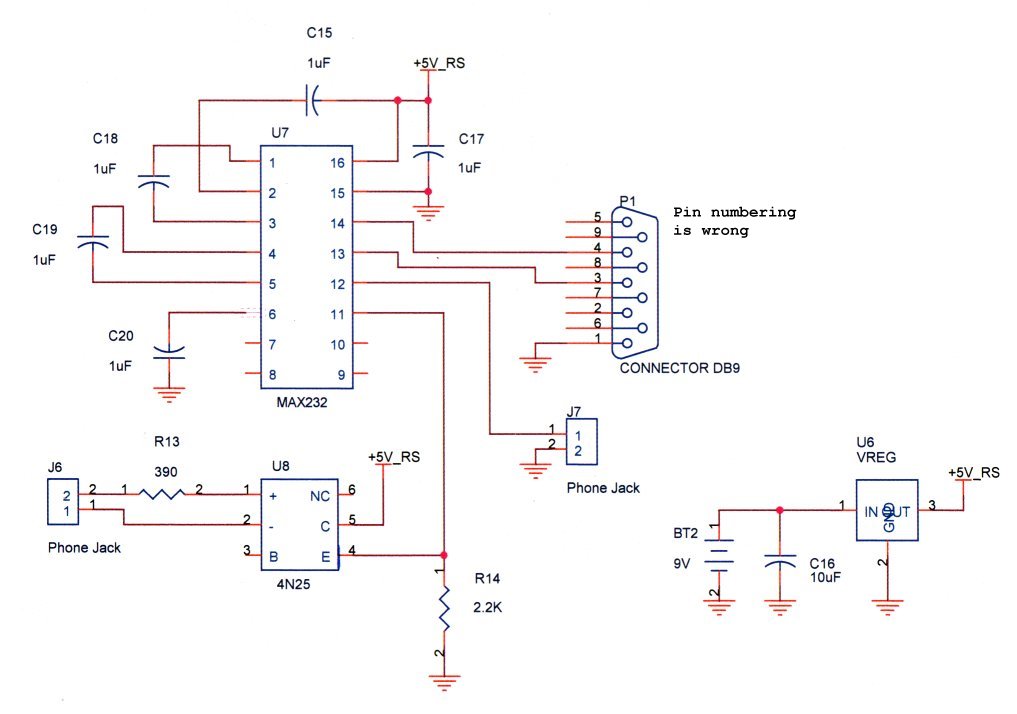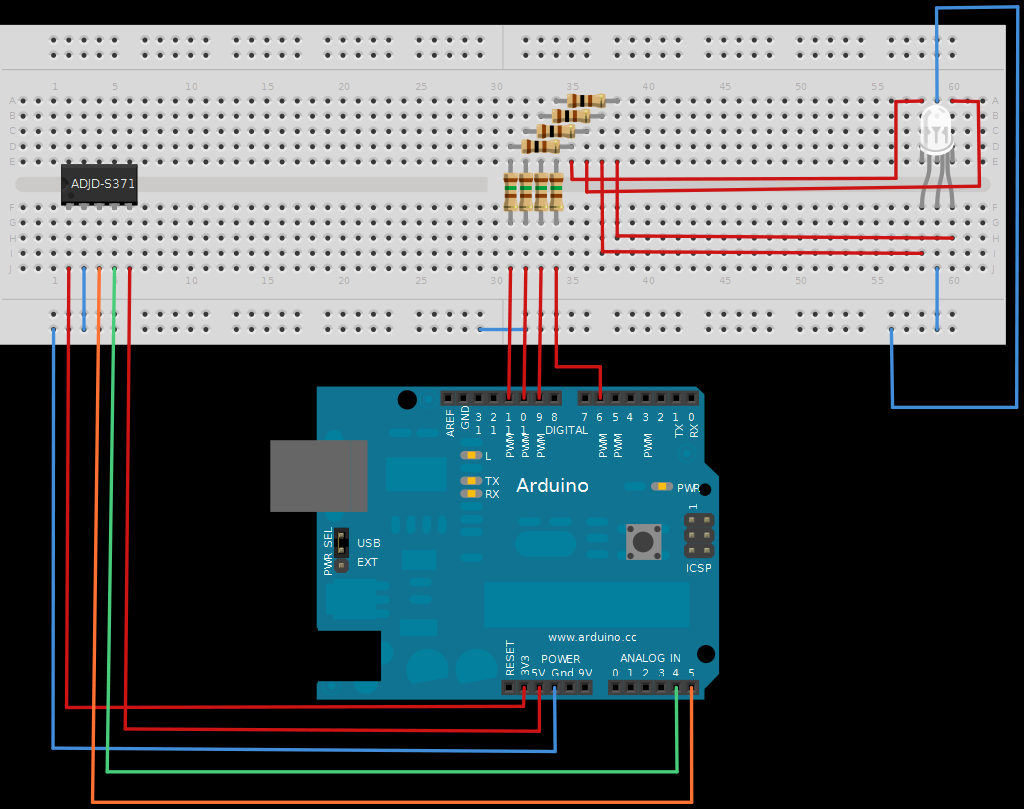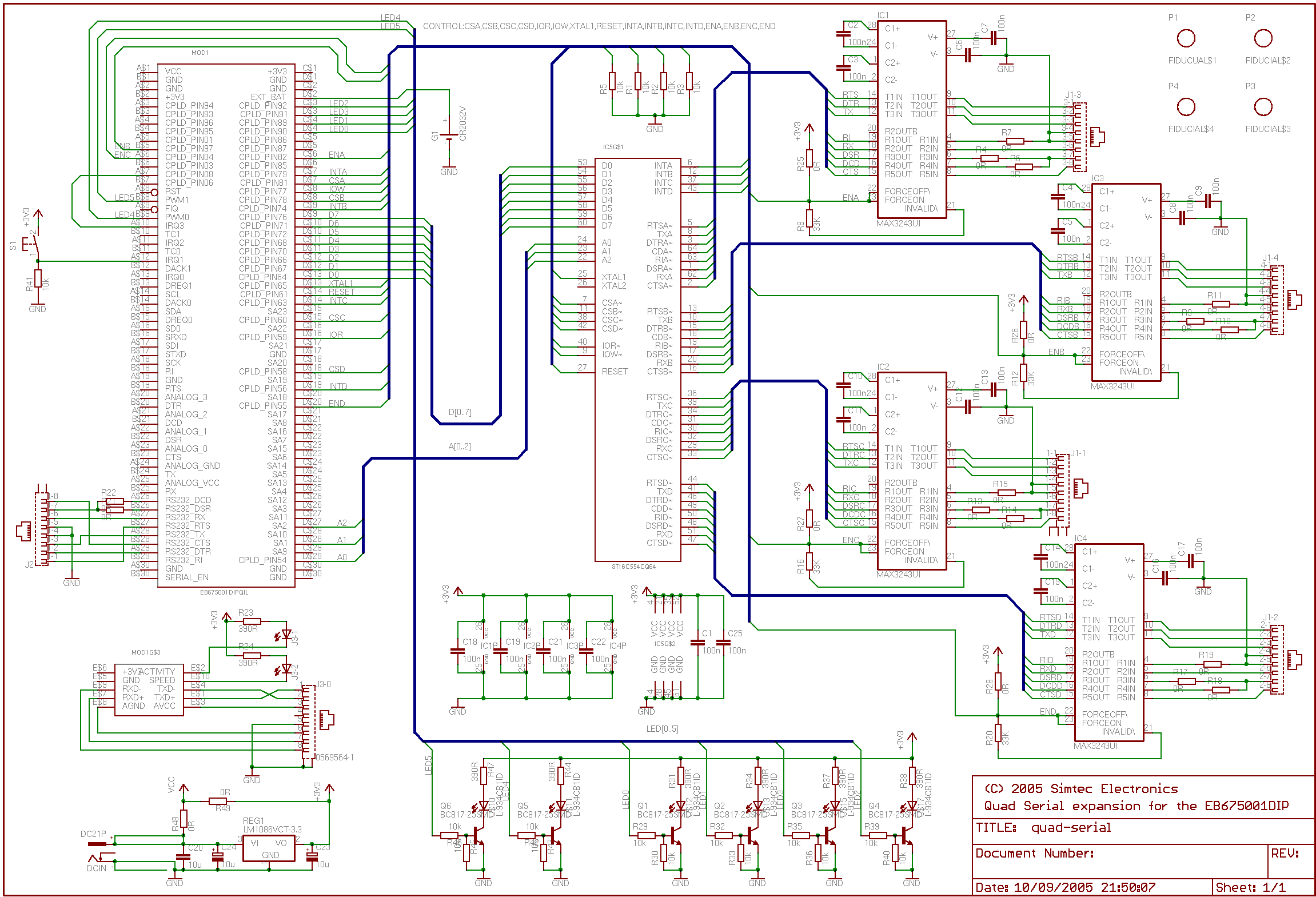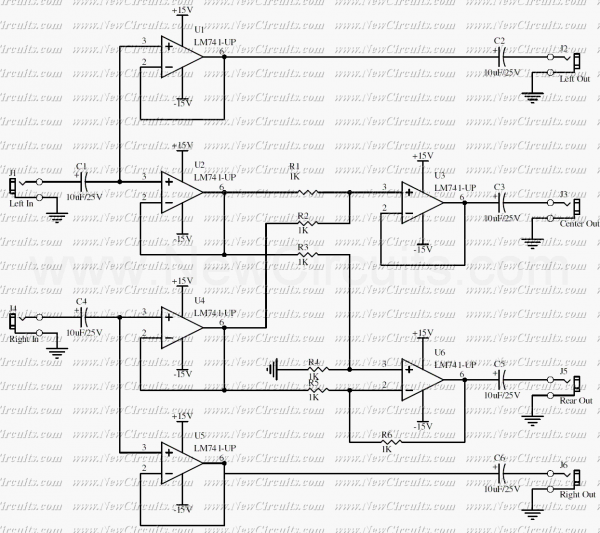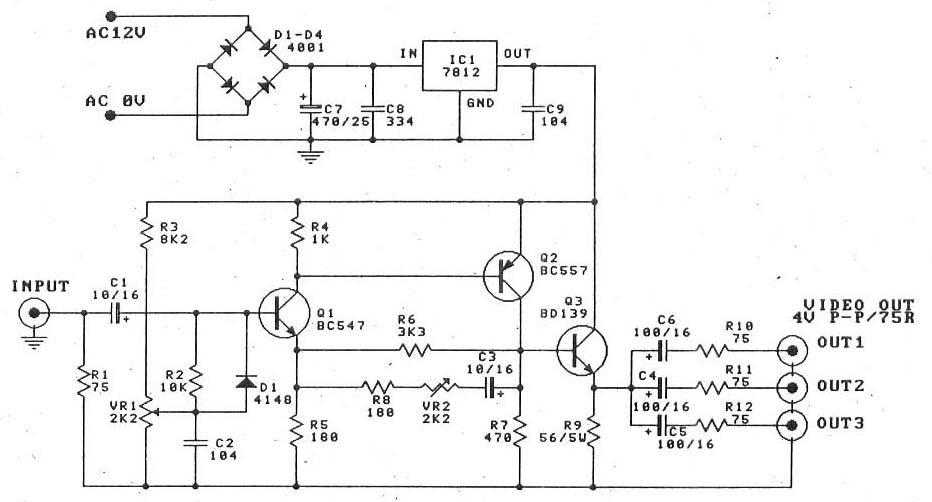
NTSC RGB VIDEO DECODER

An NTSC/RGB decoder is presented, utilizing a TDA3330 to decompose a 1-V input video signal into its red, green, and blue components, as well as composite sync. The circuit includes an integrated sync separator (LM1881) designated as U1. This design is intended for interfacing RGB monitors with NTSC video systems.
The NTSC/RGB decoder circuit employs the TDA3330 integrated circuit, which is specifically designed for processing video signals. The TDA3330 takes a standard 1-V peak-to-peak video input and separates it into individual RGB channels, allowing for high-fidelity color reproduction on RGB monitors. The output from the TDA3330 consists of three separate voltage signals corresponding to the red, green, and blue color components, which can then be fed into the respective inputs of an RGB monitor.
In addition to the RGB outputs, the circuit also provides composite sync output, which is essential for synchronizing the display with the video signal. The LM1881 sync separator, designated as U1, plays a critical role in extracting the sync pulses from the composite video signal. This ensures that the RGB monitor can accurately align the displayed image, preventing issues such as image tearing or misalignment.
The overall design of the circuit is oriented towards compatibility with NTSC video systems, making it an ideal solution for applications that require the integration of RGB monitors in environments where NTSC signals are prevalent. The careful selection of components and the configuration of the TDA3330 and LM1881 ensure reliable operation and high-quality output, making this circuit a valuable addition to video processing systems.An NTSC/RGB decoder is shown here. Using a TDA3330, 1-V input video is broken down into its R, G, B components, and composite synch. U1 is an integrated synch separator (LM1881). This circuit should be useful for interfacing RGB monitors to NTSC video systems. 🔗 External reference
The NTSC/RGB decoder circuit employs the TDA3330 integrated circuit, which is specifically designed for processing video signals. The TDA3330 takes a standard 1-V peak-to-peak video input and separates it into individual RGB channels, allowing for high-fidelity color reproduction on RGB monitors. The output from the TDA3330 consists of three separate voltage signals corresponding to the red, green, and blue color components, which can then be fed into the respective inputs of an RGB monitor.
In addition to the RGB outputs, the circuit also provides composite sync output, which is essential for synchronizing the display with the video signal. The LM1881 sync separator, designated as U1, plays a critical role in extracting the sync pulses from the composite video signal. This ensures that the RGB monitor can accurately align the displayed image, preventing issues such as image tearing or misalignment.
The overall design of the circuit is oriented towards compatibility with NTSC video systems, making it an ideal solution for applications that require the integration of RGB monitors in environments where NTSC signals are prevalent. The careful selection of components and the configuration of the TDA3330 and LM1881 ensure reliable operation and high-quality output, making this circuit a valuable addition to video processing systems.An NTSC/RGB decoder is shown here. Using a TDA3330, 1-V input video is broken down into its R, G, B components, and composite synch. U1 is an integrated synch separator (LM1881). This circuit should be useful for interfacing RGB monitors to NTSC video systems. 🔗 External reference

